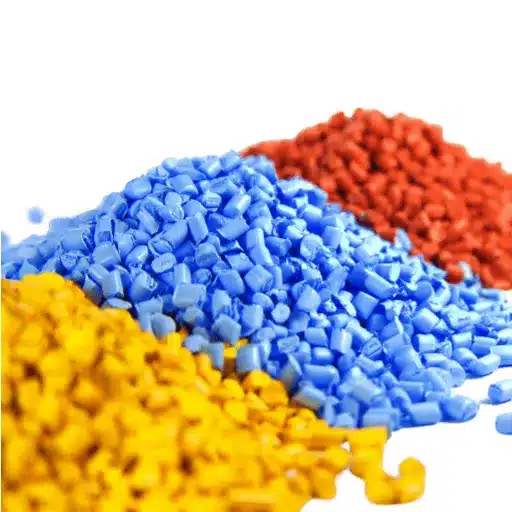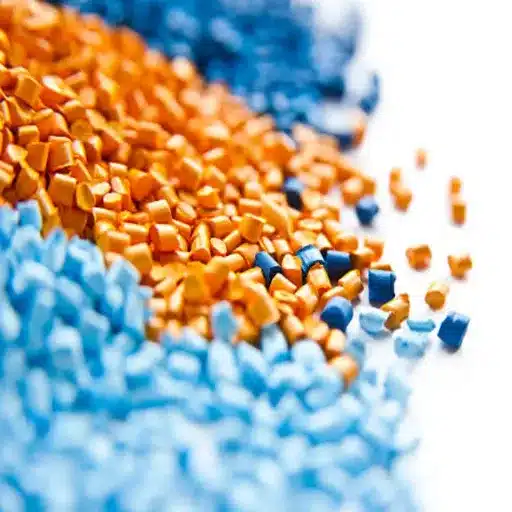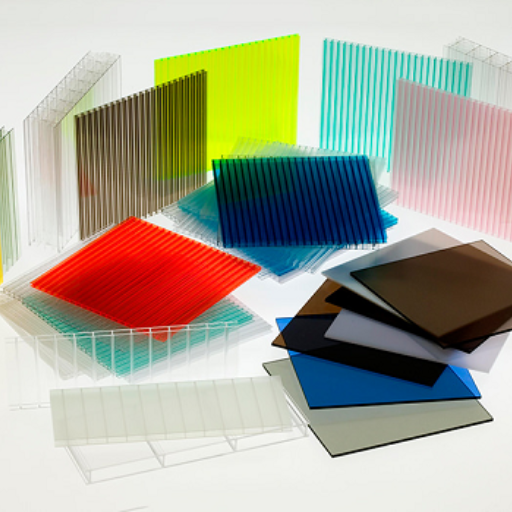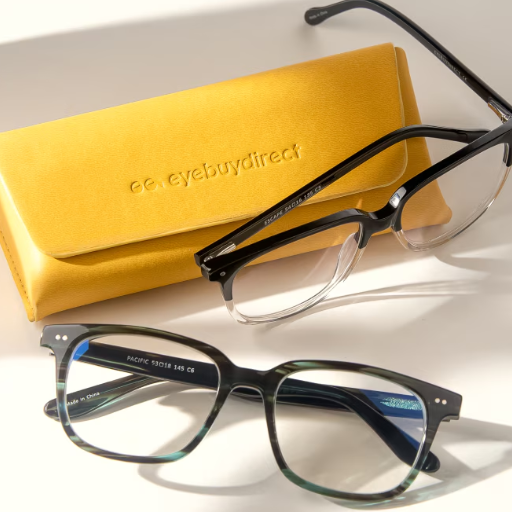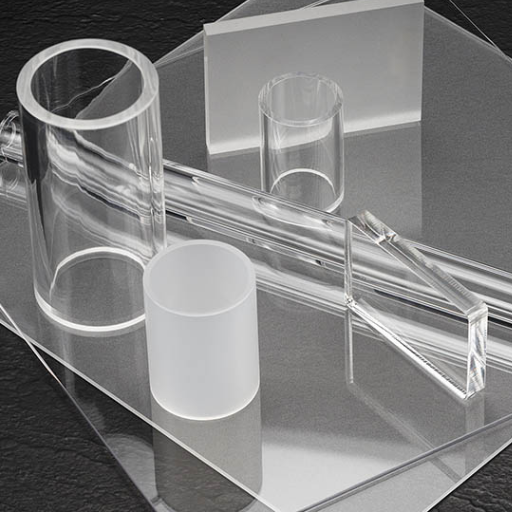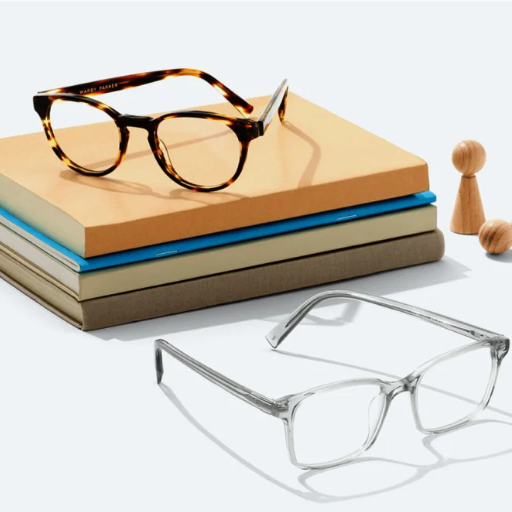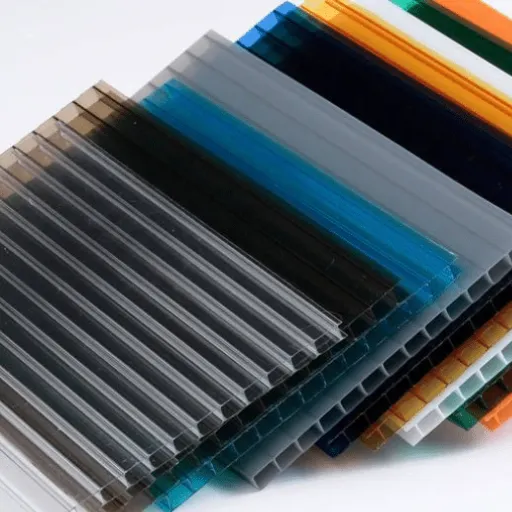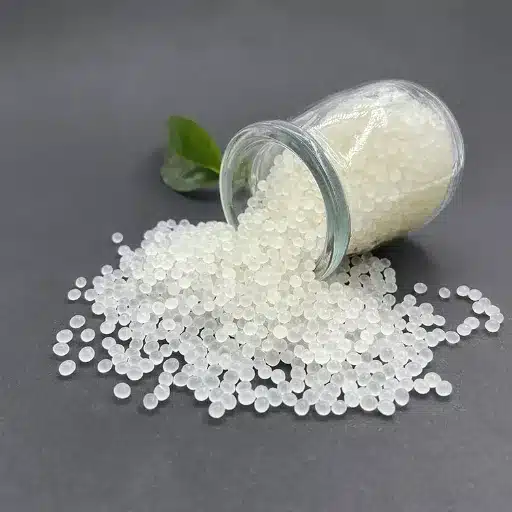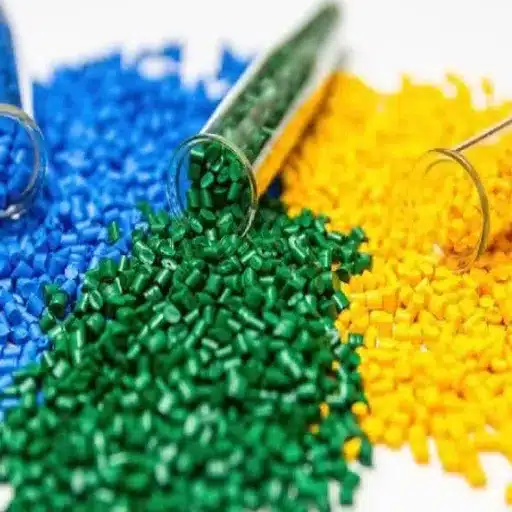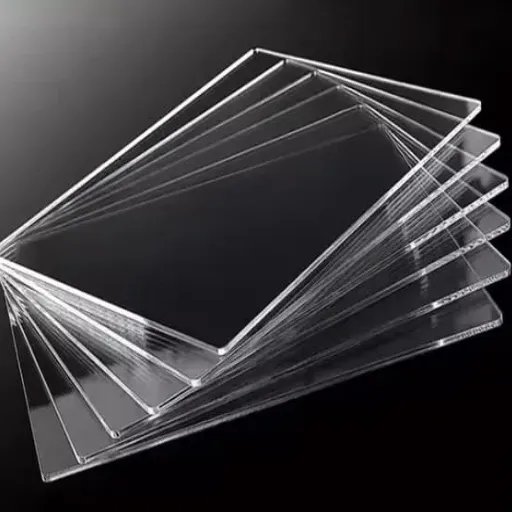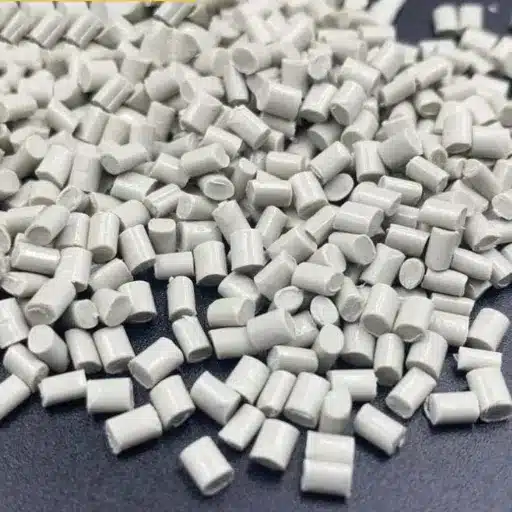Polycarbonate (PC) is an endlessly versatile and extensively employed material with several exclusive properties, including immense strength, toughness, and superior optical clarity. One of the physical properties of paramount importance is the density of the polymer. Performances and applications of such a powerful material critically hinge on its density. It is indispensable in modern industry. Its incomparable characteristics dictate polycarbonate to be used for targets ranging from components for automotive engineers, electronics, and construction materials that define the final operative capacity on which current mechanical technology depends for success. In understanding more about PC, especially about the density of the material, we shall explore the density and its effects on the functionality of this extraordinary polymer and reflect on its varied applications within our daily environment.
Overview of Polycarbonate

What Is Polycarbonate?
Polycarbonate (PC) remains a versatile and high-performance thermoplastic polymer, whose primary assets include transparency, robustness, and strong behavior. It is synthesized from the low-weight composite arising from the reaction of bisphenol A (BPA) with phosgene. Polycarbonate has to endure severe environmental and mechanical stresses but yet is quickly customizable. This has drawn its use in many fields including industrial applications and eyewear. Those sought out in recent times are PC variants for those in sustainable engineering applications, thanks to their recyclability and adaptability to high-tech manufacturing processes.
Distinctive Features of Polycarbonates
- Impact Resistance: Polycarbonate is the material most valued for its toughness and resistance to impact, making it a preferred choice for applications with strict requirements of hardiness such as safety gearing, automobile parts, and bulletproof glass.
- Light in Weight, Yet Stronger: Polycarbonate is light yet strong and can provide immense strength for a good strength-to-weight ratio for occupations such as aerospace and consumer electronics.
- Optical Clarity: Being a high potential for transparency, polycarbonate is a fine substitute for glass, providing clear vision for applications like eyewear lenses, windows, and LED light covers.
- Thermal Stability: Its adaptability to a wide range of temperatures, and continuous structure makes it a considerable option for hostile environments.
- Recyclability: Polycarbonate recyclability and sustainable advancements have augmented the role for engineering in sustainable polymer technology. It can be reused in new innovations of manufacturing processes, which reduce environmental impact.
- Ease of Molding and Fabrication: Ability to be easily molded and shaped results in high design flexibility for various applications, from medical devices to consumer goods.
These characteristics make polycarbonate an indispensable material in modern manufacturing, combining durability, functionality, and sustainability.
Common Applications of Polycarbonate
Polycarbonate is widely used in a large array of industries because of its unique characteristics, strength, transparency, and heat resistance. Here are a few of the applications:
🚗 Automotive Industry
Polycarbonate finds wide applications in automotive applications for headlight covers, interior panels, and many glazing components due to its plasticity and resistance to impact.
💻 Electronics
These materials form part of the work on which laptops, smartphones, and electrical insulating devices are built.
🏗️ Construction
Polycarbonate sheeting can be found in many rooftop and skylight forms as greenhouse glazing; they harbor long lifetimes and capacity to transmit natural light.
🏥 Medical Devices
Polycarbonates stand biocompatible and easy to sterilize, thus making them ideal for use in various medical applications like syringe bodies, blood reservoirs, and container lids.
🛍️ Consumer Goods
Engineering plastics are employed in production industries to make polycarbonate compounds great for different consumer products like lenses for eyeglasses, reusable water bottles, and lightweight sporting equipment.
✈️ Aerospace
Their main use is for lighter instrumentation in moderate to extreme conditions. The polycarbonate based clear “glass” is used for the canopy of the cockpit, and even in the windows of the aircraft.
Spawning industries are fascinated by polycarbonate innovations, and to that end, these applications are just a few examples of how these innovations work in the transport sector or construction to produce invaluable opportunities in meeting present-day challenges.
Understanding Density in Materials

Density and Specific Gravity Defined
Density is the amount of mass that a substance possesses per unit volume—most often, this is expressed in “mass per unit volume” with either g/cm³ or kg/m³ as the units. Density is one of those characteristic properties through which materials are defined on the basis of how closely packed together their particles are. The equation used to figure out density mathematically is:
Density (ρ) = Mass (m) / Volume (V)
On the other hand, the specific gravity is a unit-less parameter that should not in any way be mistaken for density. The specific gravity is given as the numerical ratio of volume densities of the material under consideration to a reference material—the standard liquid of water at 4°C (density around 1 g/cm³). The specific gravity can be written as:
Specific Gravity = Density of Material / Density of Water
The most up-to-date information indicates that density and specific gravity are crucial when determining specific material properties in industries ranging from construction to aerospace. For instance, identifying the specific gravity of polycarbonate amply exemplifies how density profiles allow practical predictions. Therefore, an understanding of these material properties is essential if one is set to innovate for lightweight, sustainable design.
Importance of Density in Material Selection
Depending on the application, density significantly influences material strength, lifetime, and energy efficiency. In automotive and aerospace applications, materials with low densities, like carbon fiber composites and a variety of aluminum alloy grades, are frequently chosen for their lightweight yet structurally strong properties. Light weight in turn increases fuel efficiency and decreases carbon emissions as a means to satisfy global sustainability ideals. Furthermore, in applications like packaging, low-density materials are selected for their efficiency in transportation due to recyclability, both factors ultimately expressed in cost savings.
Key Factors in Material Selection
- ✓ Structural Strength: Balance between weight and load-bearing capacity
- ✓ Energy Efficiency: Lower density reduces fuel consumption in transport
- ✓ Recyclability: Environmental impact and cost savings
- ✓ Performance Reliability: Consistency under operational conditions
- ✓ Sustainability Goals: Carbon emission reduction and green technology
More recent findings displayed on internal search engine insights back advancements of lightweight materials. These were mostly trending ones; such materials are used in additive manufacturing and green technology constructions. The questions about whether density affects recyclability and performance reliability have already spurred debate. It raises the undoubtedly critical fact that comprehension and utilization of density for material selection lead to untouched opportunities for achieving optimized designs that balance performance with green responsibility.
Density Range Across Plastic Materials
A wide range of density values is definitely a feature of plastics that enable their versatility in numerous applications. Low-density plastics—carrying a density of 0.91-0.94 g/cm³—(i.e., LDPE have been the usual ones) commonly furnish them with a lightweight characteristic and flexibility overall. On the opposite extreme of the scale come high-density plastics, like PC and PTFE, with a density of 1.2-2.3 g/cm³, providing high strength and durability for use in applications that have exceptional needs.
| Plastic Type | Density Range (g/cm³) | Key Characteristics |
|---|---|---|
| LDPE | 0.91 – 0.94 | Lightweight, flexible, cost-effective |
| PP (Polypropylene) | ~0.90 | Low density, good chemical resistance |
| PMMA (Acrylic) | ~1.18 | Optical clarity, weather resistance |
| PC (Polycarbonate) | 1.20 – 1.22 | High impact resistance, transparency |
| PVC | 1.3 – 1.4 | Heavier, rigid, good stiffness |
| PTFE | 2.1 – 2.3 | High density, chemical resistance |
In recent trends, the message being sent out is that engineers and manufacturers are increasingly growing serious about the recyclability of plastic materials on an equal footing with their performance qualities. The lower-density plastics are favored for the manufacture of cost-effective consumer goods and packaging, owing to their energy efficiency in manufacture and easy recyclability. Some of the markets, however, give more considerations to higher-density plastics in the context of long life, abrasion resistance, and structural integrity: this could be seen in the aerospace and automobile industries.
Newer data again points towards the need to investigate innovative applications where density defines environmental sustainability. For instance, bio-based plastics and composites are currently being developed with densities intermediate to their traditional counterparts, in addition to aiming at superior recyclability and the lowering of damage to the environment. It emerges that a correct grasp and application of density values in choosing the right plastic for an application goes far in the realization of the propensity for optimum functionality combined with sustainable commitments.
Density Values of Polycarbonate
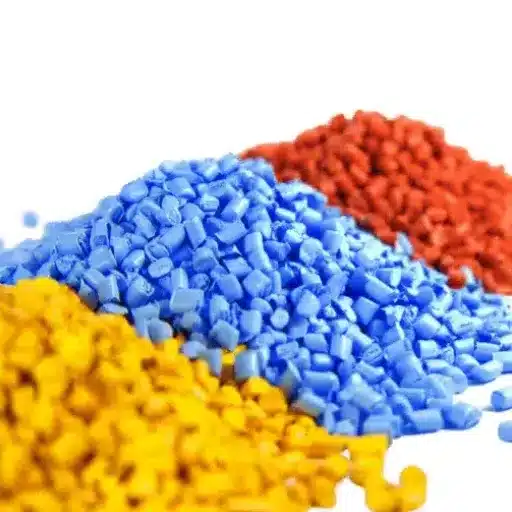
Exact Density of Polycarbonate
Polycarbonate is a versatile thermoplastic that has a density which generally lies within 1.20 to 1.22 grams per cubic centimeter (g/cm³). This rather lower density in comparison with metals and glasses could make polycarbonate an admirable material when lightness or better durability is of concern—automotive parts, spectacle lens, or electronics, for example. Again, exact values could slightly oscillate since grades or additives can well be put together to ascertain better conditions for specific usage.
Standard Polycarbonate Density
1.20 – 1.22 g/cm³
This moderate density makes PC ideal for applications requiring strength without excessive weight
Comparative Densities of Other Plastics
Polycarbonate could be called moderately dense (approximately 1.2 g/cm³) when compared with other more typically used plastics—such as one of the lowest-density PE at 0.91 to 0.96 g/cm³—and thus it is a light but also strong material. Similar in the same low-density range near 0.90 g/cm³ is PP, while PVC has a somewhat higher density of around 1.3 to 1.4 g/cm³, making it subsequently heavier but retaining its stiffness. Acrylics, typically seen in PMMA with densities quite close to polycarbonate at about 1.18 g/cm³, offer significant optical and weathering value.
These comparisons underlined the fact that polycarbonate achieves a balance between weight and performance. It excels in this regard, with a comparably low density, high impact resistance, versatility, and general machinability. All these factors discussed make it the most preferred material in application areas where some capacity for robustness is required without sacrificing vital aspects of portability.
Factors Altering the Density in Polycarbonate
There are several factors that may influence the density of polycarbonate. The usual value of density lies around 1.2 g/cm³. The first and the most pronounced ones—because of the additives that could be included during manufacturing, e.g., glass fibers, flame retardants, etc. These are apparently affecting a big jump in the material density for the required application. Another major role is played by the processing elements, such as temperatures and pressure, which determine the final density of processed material. Also, variation in polymer chain length and molecular weight in a pretty small range tend to result in slight variation in density that can potentially alter the mechanical properties of the material.
Density Modifying Factors
- Additives: Glass fibers and flame retardants can significantly increase density and enhance specific properties like rigidity and fire resistance.
- Processing Conditions: Temperature and pressure during manufacturing affect the final density of the processed material.
- Molecular Weight: Variations in polymer chain length result in slight density changes that alter mechanical properties.
- Grade Variations: Different polycarbonate grades are engineered for specific applications with tailored density profiles.
One of the most significant roles that polymer technology has played has been perfecting polycarbonates for specialized applications. For instance, polycarbonate can be filled with glass to increase the density above the normal level and enhance the rigidity and structural strength. These kinds of innovations are continuously making polycarbonate a good candidate for industrial selection across the automotive, aerospace, and electronics sectors.
Physical Properties of Polycarbonate
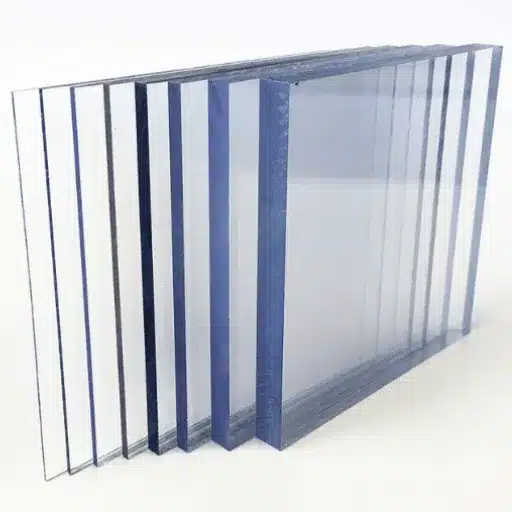
Density and Mechanical Properties
The mechanical properties of polycarbonate, such as durability, impact strength, and relative lightness, are influenced by density. The density of normal polycarbonate is about 1.20 to 1.22 g/cm³, in respect to maintaining reasonable mechanical strength and weight reduction compared to glass or metals. This combination of properties becomes critical in cases in which weight is critical, and yet, it needs to be light enough to lift its weight, maintaining the desired structural performance.
| Property | Description | Application Benefit |
|---|---|---|
| High Density PC | More rigid and dimensionally stable | Suitable for components under higher stress levels |
| Standard Density PC | Balanced properties with transparency | Ideal for safety goggles and electronic housings |
Density fluctuations can influence distinct mechanical properties. Higher density polycarbonate, for instance, is more rigid and dimensionally stable, which brings about more suitability for the components used for higher stress levels. On the other hand, somewhat lighter standard polycarbonate’s density makes it more useful when transparency and moderate level impact resistance are present, for example in safety goggles or electronic boxes. These illustrate why polycarbonate is selected for action in different fields—based on the material’s versatility, reinforced with appropriate mechanical strength for the specific entity’s needs.
Thermal Properties and High Heat Resistance
Polycarbonate has a high reputation for its thermal qualities, especially in situations requiring high temperatures. Its heat resistance maintains the integrity and functionality of the structure at high temperatures. The glass transition temperature of polycarbonate is usually 147°C (297°F), allowing this material to bear the normal load of long-term thermal exposure without showing any significant deformation. Polycarbonate’s long-term thermal performance is important for applications relating to both crystal-clear automotive headlamp lenses and parts for industrial machinery where heat exposure frequently occurs.
Thermal Performance Specifications
- Glass Transition Temperature: 147°C (297°F)
- Long-term Thermal Exposure: Maintains structural integrity without significant deformation
- Applications: Automotive headlamp lenses, industrial machinery components
Recent innovations serve to push even further towards better thermal performance, with the addition of some new grades to the market focused on even greater resistance, thereby extending to even aerospace and electronics applications. The blending of high heat resistance with beneficial alternatives further punctuates polycarbonate’s profound net worth in the current and future demand of technological and industrial applications.
Impact Resistance and Its Relationship with Density
Impact strength of polycarbonate is intimately related to its density. Studies and data indicate that whenever this density increases, toughness and energy absorption capabilities usually increase, above a certain limit. The reason behind this relationship is that the denser molecular structure results in closer-packed polymer chains and better dispersion of impact energy. However, very high-density materials may become less flexible, which in turn leads to increased brittleness.
Recent Industry Advances
Recently collected data reveals that manufacturing techniques have advanced to such a stage that the balance between density and impact resistance can now be optimized. Both polymer blends and additives are being tailored to develop polycarbonate materials that offer high impact resistance without sacrificing other important properties like transparency or flexibility. Such advances clearly serve to underscore the key role density plays in securing polycarbonate’s versatility and thereby making them useful in varied applications—from protective gear to smartphone casings.
Applications of Polycarbonate in Various Industries
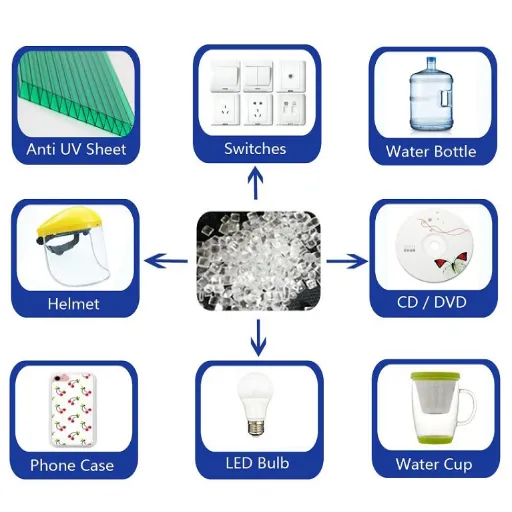
Polycarbonate Usage in Food Contact Applications
Polycarbonate has been employed extensively in food contact applications since it is remarkably durable, transparent, and heat-resistant. Many such goods include reusable water bottles, various food storage boxes or trays, all sorts of plates, cups and baby feeding bottles. These days, the industry sees BPA-free polycarbonate alternatives in the making to address the concerns regarding BPA, the compound that renders the material. Another contributing factor in the material’s selection over others for products in the food industry is the impenetrable finish of the substance, and also its ease of cleaning.
✓ Food-Grade Polycarbonate Certifications
Several grades of polycarbonate recognized by regulatory bodies (e.g., the FDA and the European Food Safety Authority) are approved as being safe for food-contact use, if the user follows the right application procedures. This ensures consumer safety while maintaining the material’s excellent performance characteristics.
Polycarbonate Usage in the Automotive and Aerospace Sectors
Polycarbonate materials are a silent revolution in the automotive and aerospace industries. These materials strike the perfect balance of strength, lightweight features, and supreme resistance to impact. Automotive industry applications are numerous and include headlamp lenses, interior and exterior parts, and panoramic roofs, which, in turn, lead to lower emissions and higher fuel efficiency due to the reduced vehicle weight. Polycarbonate is highly thermally stable hence capable of sustaining extreme environmental conditions, and can be used here effortlessly.
Polycarbonate is a core ingredient in the production of aircraft windows, cockpit canopies, and interior components in aerospace. The shatter-resistant feature provides more passenger safety, while the lightweight polycarbonates help in reducing the overall weight of aircraft, thereby enhancing fuel economy and operational efficiency of the aircraft.
Automotive Benefits
- Reduced vehicle weight
- Lower emissions
- Higher fuel efficiency
- Enhanced safety features
Aerospace Advantages
- Shatter-resistant safety
- Weight reduction
- Improved fuel economy
- Operational efficiency
Recent advancements in applications included UV-resistant coatings and formulations, increasing the utility of polycarbonate in these industries along with sustainability objectives and modern engineering standards. This combination of properties kept polycarbonate at the vanguard of innovation in transport.
Innovation Applications in Electronics and Medical Devices
Polycarbonate is an important element in future electronics and medical devices owing to its unique property of good durability, transparency, and adaptability. Polycarbonate plays a big role in electronics in items like housings for smartphones, cases for laptops and LED light covers, because in LED applications lightweight and impact resistance are paramount. Polycarbonate is a superior electrical insulator on top of being very simple to work with.
Polycarbonates are indeed a game-changer in medical applications with proper sterilization capabilities and biocompatibility required in medical-grade applications. Here is their exposure to products such as disposable syringes, IV components, and surgical instruments; each of these in high demand for life-saving medical attention. In a field where miniaturizability and transportable properties of medical devices are gaining ever-increasing importance, polycarbonate is again a core part of innovation to provide new advantages in this context of patient-care science.
| Industry | Applications | Key Properties Utilized |
|---|---|---|
| Electronics | Smartphone housings, laptop cases, LED covers | Electrical insulation, impact resistance, lightweight |
| Medical Devices | Syringes, IV components, surgical instruments | Sterilization capability, biocompatibility, transparency |
Frequently Asked Questions (FAQ)
How do the physical properties of polycarbonate contribute to the variety of its applications?
In order to understand the properties of polycarbonate, it is very important to consider physical characteristics such as density, thermal resistance, etc., depending on its applications. The high melting point and good impact resistance of polycarbonate make it suitable for use in demanding applications where its excellent durability also stands up: examples being extruded sheets for roofing and riot shields. In addition, some of the optical properties of polycarbonate include its optical clarity; therefore, polycarbonate is also suitable for use in compact discs and many other applications calling for clarity. The thermal resistance and long-term exposure to UV ensure that the structure of polycarbonate is maintained over long periods. Understanding these properties, therefore, is important when considering different grades of polycarbonate for specific applications.
How do the specific gravity and density of polycarbonate compare to some other plastics?
Polycarbonate has a specific gravity of about 1.2-1.22, making it heavier than lower density materials, such as acrylic and acrylonitrile butadiene styrene (ABS). This density is relatively more substantial. Polycarbonate has quite a high production capability due to its higher density, which is linked with toughness and strength, and is therefore vital to applications that need to demonstrate high impact resistance. Conversely, the use of a material that trades strong characteristics for a lightweight construction would be helpful where weight is the primary consideration; lighter polymers and composites are not necessarily as strong as polycarbonate but may still target lighter weights where strength can be sacrificed. Awareness of densities of other polymers makes it possible to pinpoint the proper material for a specific application requirement. Comparing polycarbonate density to that for alternative polymers is, therefore, an essential matter for engineering applications.
What applications of polycarbonate use its density characteristics to an advantage?
There are many beneficial applications of polycarbonate due to its density attributes, riot shields, auto parts, and lenses being the sample beneficiaries. Being so dense and strong, it turned out to be a highly suitable material for any protective gear that must remain intact on heavy impact. In the automotive industry, it serves another purpose by being lightweight yet highly temperature resistant in reducing fuel use while ensuring safety. Its optical transparency makes it usable in lenses and CDs, adding functionality while maintaining lightness. For that reason its density is relevant not only to the mechanical strength but also to the fact that it has wide industrial applicability.
Conclusion
Understanding the density of polycarbonate is fundamental to appreciating its wide-ranging applications and superior performance across multiple industries. With a density of 1.20 to 1.22 g/cm³, polycarbonate strikes an ideal balance between lightweight construction and robust mechanical properties, making it indispensable in automotive, aerospace, electronics, medical devices, and construction sectors.
The relationship between density and key properties such as impact resistance, thermal stability, and optical clarity highlights why polycarbonate continues to be a material of choice for engineers and manufacturers worldwide. As innovations in polymer technology advance, polycarbonate formulations are becoming even more specialized, with enhanced recyclability and sustainability features that align with modern environmental goals.
Whether you’re selecting materials for high-stress applications or developing lightweight consumer products, a thorough understanding of polycarbonate density and its implications will guide you toward optimal design solutions that combine performance, durability, and environmental responsibility.
Reference Sources
- 📚
Princeton University: A detailed overview of polycarbonate properties, including its density and mechanical characteristics. nglos324 – Polycarbonate - 📚
Johns Hopkins University: A document discussing PC-ABS material properties, blending the strengths of polycarbonate and ABS. PC-ABS Material Properties and MSDS - 📚
Wright State University: A presentation on material performance indices, including polycarbonate density and cost analysis. Material and Performance Index







